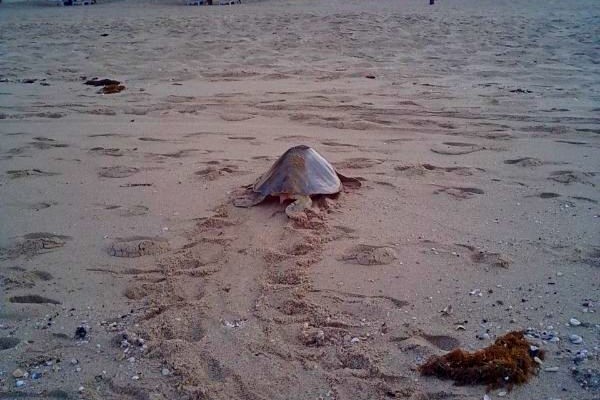Although high summer temperatures in this region do not provide the best hatching conditions for turtle eggs, some successful cases over the years have made the birth of this species an extraordinary event.
The beaches of Puerto Peñasco have become a spot some turtles have chosen to lay their eggs, though in only a few cases have the eggs actually reached the hatching point – such as late last year near Mayan Palace.
The majority of turtles that lay their eggs on Mexican shores do so on beaches further to the south and center of the country. There, hundreds of cases have been registered of turtles making their way onto beaches to dig their nests and then return to the sea.
In this region, while it is common for some turtles to deposit their eggs on area beaches, it is not as common for these eggs to hatch despite care and monitoring. Such was the case last summer in the area of Sandy Beach where staff from the Federal Environmental Protection Office (PROFEPA) set up watch with the intent of monitoring the nest of an Olive Ridley turtle. Unfortunately, these eggs did not make it through the summer.
Hiram Peña, Deputy Director at the Intercultural Center for the Study of Deserts and Oceans (CEDO), explains within this region there is an abundance of the leatherback sea turtle, olive/pacific ridley, and loggerhead sea turtle (caguama). All of these species are considered to be endangered and therefore protected by federal offices.
He noted in 2014 there was knowledge of at least three cases of turtles laying their eggs on the beaches of Puerto Peñasco, of which only one reached the hatching stage.
He mentioned various factors, such as humidity and sand temperature, can impact the success of turtle eggs. Sand temperatures should be between 30°C and 32°C (86°F to 89.6°F), which is why the risk of eggs dying increases when temperatures are either below or above this. If a turtle nest is successful, the eggs will hatch within 48 to 55 days.
“In general,” he furthered, “and depending on the species, sea turtles lay their eggs toward the end of Spring and into Summer, while some do so each year and others do so every two years.”
Peña indicates if one were to see a turtle making their way to nest, give them space and do not interfere. In addition, allow the corresponding PROFEPA authorities room to rope of the area in question on public beaches and provide monitoring.
